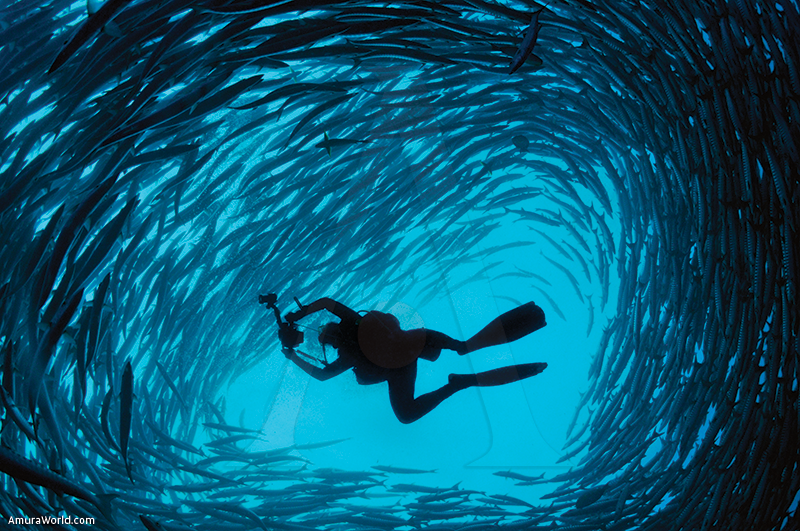Drive and Dive
Very little is typical in the Empire State. Times Square’s Naked Cowboy earns his keep playing guitar in his skivvies. Garbage is repackaged and sold as art. Burgers topped with gold flakes sell for $175. Knowing this, I shouldn’t be surprised when Capt. Hank Garvin of the research vessel M/V Garloo tells me that all summer he’s encountered Atlantic spadefish, a silvery, warm-water species in an area where temperatures rarely climb above the 50s. Credit the Gulf Stream: This strong current sweeps Caribbean species as far north as Massachusetts. Some divers wear a 7mm wetsuit, hood and gloves, especially in late August, September and early October, but a drysuit is recommended.
Northeast divers are also used to reduced visibility; divers stick close to their buddies to avoid risking disorientation. The morning we moor up to the USS San Diego, the sea is flat and the sky cloudless.
Indian summer is in full effect, yet those around me all zip into drysuits — perhaps out of habit. I jump in and follow the other divers down the mooring line. At the deck of the San Diego, 30 feet of visibility greets us as we part in pairs to explore.
The armored cruiser lies in 110 feet of water, having sunk in 1918 after an explosion — origin unknown — clawed through the port side. The sea swallowed the vessel in just 28 minutes. Now, the 504-foot-long ship rests upside down on the sand, 13.5 miles from Fire Island Inlet. With several large entry points and a long interior ideal for lengthy swims, the San Diego is appealing to penetration divers.
We trace the starboard-side keel toward the bow, passing several guns. Thousands of soft, white anemones claim the hull, making the ship appear blanketed by just-fallen snow. Black sea bass gawk back at us, seemingly taunting the collectors with their protected status, as if they know that the wreck lies within a marine park. A lone lobster waves his fat mitts before scrambling from view.
Time at this depth is short for recreational divers. After a last look at a bushy-backed sea slug, we make our way back to the mooring line. And there they are — a school of 13 Atlantic spadefish glittering in the low light. They seem to serve as a harbinger of good luck.
The next morning we tie up at the Oregon, a 518-foot-long, 19th-century passenger steamship that once set transatlantic speed records. In 1886, a schooner collided with the Oregon, sending it to its fate in 125 feet of water. No lives were lost, but many belongings were. Most passengers were readying for a new life in the States and filled steam trunks with silver teapots, jewels, trinkets and anything else of value. Unlike the San Diego, the Oregon is a free-to-take zone. The wreck itself is impressive to behold, but many visitors collect more than just photos. Divers nab artifacts, and lobsters.
On the first dive, I’m too taken with the steering quadrant to look for a souvenir. The wagon-wheel-like piece of machinery stands 20 feet tall; green, yellow and white anemones and sponges encrust every inch. A school of cunners swarms the structure, darting away and reappearing each time a diver approaches. Atop the deck, sea stars lie in piles of 10 or more, fighting colonies of scallops and mussels for real estate.
During the second dive, we check out the bow section and the engine, which starts at about 65 feet deep. Wreckage lies strewn around the towering block — all of which is now habitat for cod and sea bass.
A few fin kicks away, another diver wrestles with a stubborn lobster. As I watch him work, I realize I’m forgetting to look for lobsters or artifacts. Of course I’d like to pocket a silver spoon or even an intact nail, but as I take stock of everything before me — ideal, warm conditions and a massive wreck riddled with marine life and color — I find I’m happy just to be taking in a scene that typifies why local divers love this wreck.
Text: Brooke Morton ± Photo: LA TERCERA / WPS / BO / FYP / CLOUD FONTI / STAR MEDIA







